I wanted to share a decent build I finished, what I'm calling the Microfarads!

Project Description:
This is the most challenging smallest speaker I've built to date. Due to the strict enclosure volume restrictions, this is also the most precisely built speaker I've made with each cut toleranced to less than 1/32".
Total internal volume (not air space) is 3 liters including the PS95 sub-enclosure, I was pretty frustrated about some of the nonsensical restrictions on this project initially but ultimately grew to appreciate Ben's sense of neurotic restricted creativity =)
The subwoofer is the Tang Band W5-2053 with 2 Peerless 5.25" per enclosure.
Crossover frequency is about 300hz
Design Goals:
1 - Build a full range speaker capable of solid bass with smooth response to 20kHz
2 - Total internal volume of 3 liters including mid enclosure
3 - Unique striking look
4 - Ensure every possible square inch is covered by a sound radiating diaphragm =)
Driver Selection:
I tried a few different drivers but always knew I'd end up with the W5-2053, this thing is a monster and the bass it puts out from only 3l is astounding. Was an interesting driver to work with as it's response falls off a literal cliff at around 1kHz, so I used that to my advantage in the XO.
I had a pair of PS95's I'd been wanting to try out and was shocked by how good they sounded, so after trying some different drivers I settled on those. They were also welcome with the limited space I had to work with.
Enclosure design:
This was purely determined by 2 factors...driver and PR mounting dimensions and the strict internal volume requirement. As you can see it's all a tight fit.
Precise calculations were made initially using some triangle area calculators to ensure internal volume was at or less than 3l.
Passive Radiators ended up with no weight which resulted in a 56hz tuning frequency, more boosted than I wanted but adding any weight maxed out the excursion that much sooner. I was able to add 15 grams to bring it down to 50 but the passives were straining much sooner, as is the W5 easily over powers 2 5" PR's, really 3 or 4 of these would better keep up with 1 W5.

Another passive radiator issue I dealt with early on was "enclosure walk", using dual opposed passive radiators solves most of that. Also Sorbothane feet in 30 durometer further eliminated any chance of movement.
Enclosure Construction:
Construction is solid mahogany, angled joints are mitered, all glue construction.

I made this CAD (Cardboard Accurate Dimension) to help with the initial concept, I also used it to check test cuts to ensure things were aligning and helping with angle calculations:

Plywood test cut that was perfect, this locked in all my angles on the table saw:

Tape held it all together:

In Mahogany:


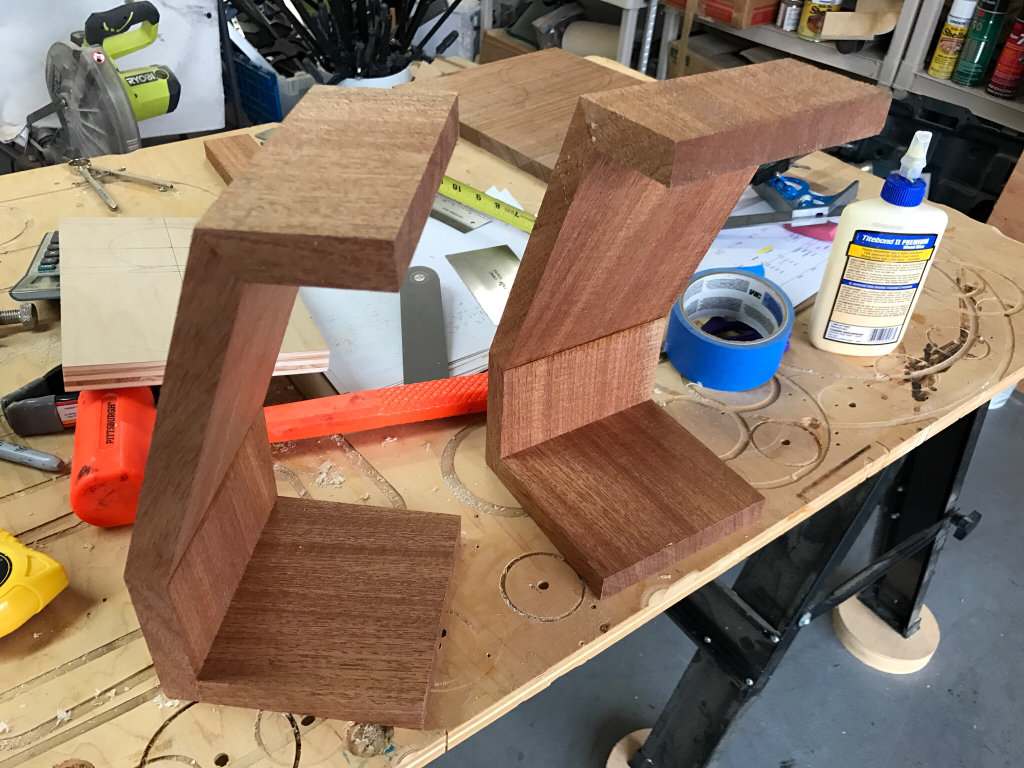
I made the cut out of one board to match the grain:

Attaching front baffle:

My cut list:

Test fit:


Clamping and gluing the baffle:

Before I attached the sides I wanted to finalize the mid enclosure, since the PS95 needed no airspace to play to 300hz, I molded a tight fitting fiberglass enclosure.
I started by mounting the driver into a board just like I would in the final enclosure, then I built a makeshift mold using layers of alum foil and masking tape:

Fiberglass matte:

Polyester resin:

Wala, about 5 layers:

Removed from the mold:
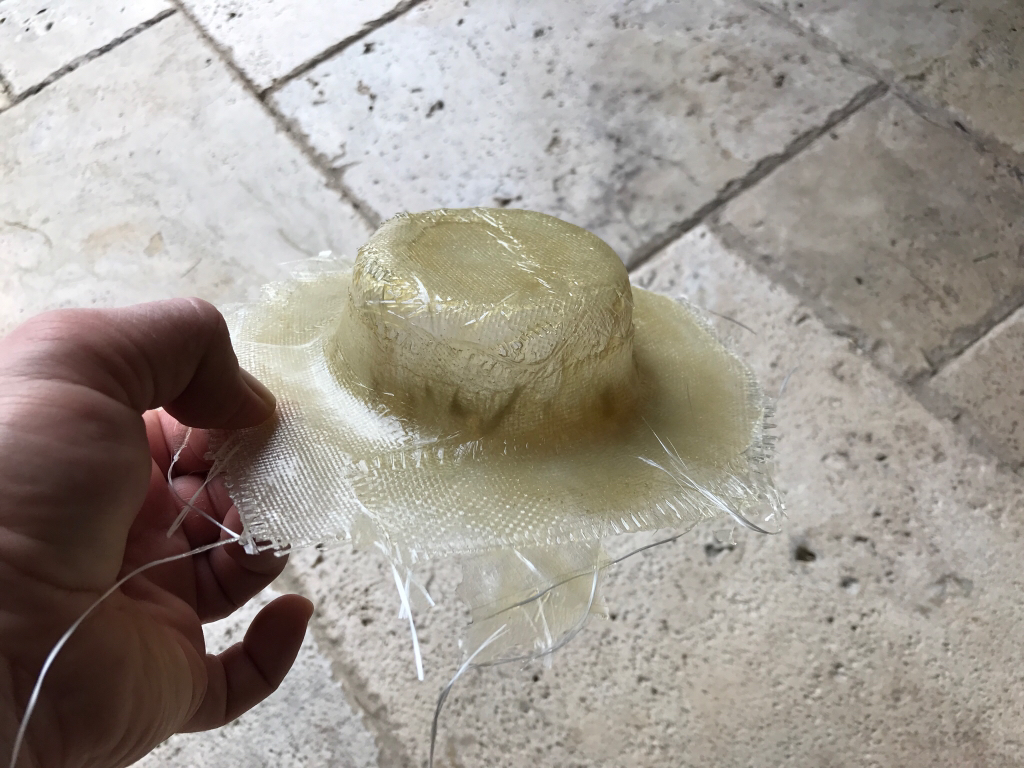
Trimmed up and painted:


Built into the mold was a 3/16" Sorbothane disc which creates a CLD treatment to the back of the enclosure, as the driver is screwed down it loads up on this viscoelastic dampening medium and greatly acoustically dampens the mid enclosure. I tested this and it works well:



Mounted, it is attached with silicone adhesive and some screws for good measure:



Time for some sides:

All panels glued and flush, ready for some roundovers:

I didn't have enough room for a full 1" round over like I wanted to do, but fortunately the W5 wouldn't benefit from it, so I developed a way to do a tapered round over using a wedge for the router bearing to ride on:



This created a precise contour that cleared all driver frames.
And all round overs and treatments done:

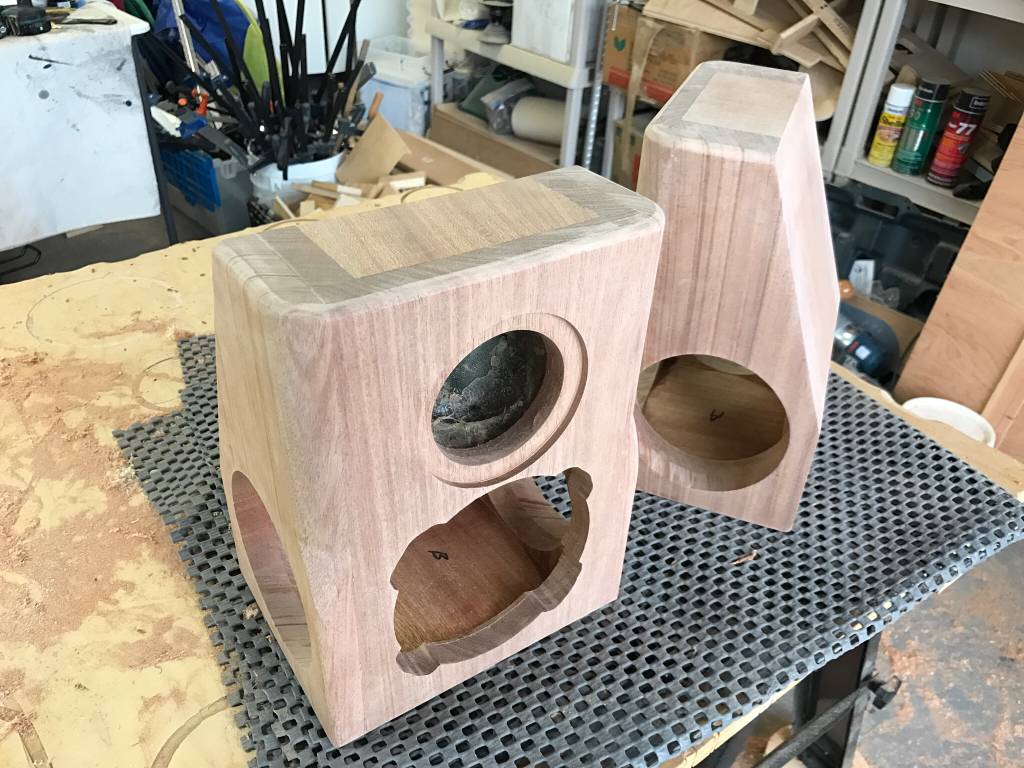
And a coat of Danish Oil, BOOM! There's the grain!


And after soaking in:

Crossover Design:
I tried many designs including various frequencies and electrical slopes before finalizing on what I have here. I ended up with 18db on the mid and 12 on the sub. Since I was crossing over at 300hz I used an Lpad to not only balance out the more efficient PS95 but also as a baffle step function.
The PS95 also displays break up bad above 15k but it starts around 9k, I implemented a 12db low pass sound 10kHZ which rolled off the top end nicely until it was voiced the way I wanted. Not sibilant but with air and space. Indicators are 18ga, all capacitors are electrolytic except for poly in the PS95 top end roll off and the 1uf listed in the schematic.
I tuned this until it had a flat response but like that the highs just fell flat, despite loving the FR plot it just didn't sound rift, so what sounded best is what's below (near field at about 12" centered on the mid.



Installed, tight fit!

Conclusion:






These were a blast and they've been my go to speaker for casual listening the last few weeks! Everyone that has heard them has fallen love with them, so I'll be very interested to hear how they hold up at Indiy. The bass is shockingly powerful for 3 1/2 inch diaphragm, they put out comparable bass to many 10 inch sub offers that I've heard and built in the past, they will easily trounce most 8" on the market.
This is the first time I've used a "full range" driver and I'm very pleased with it, working with the top and was challenging but once I got it rolled off and minimized the break up it really smoothed out and is quite surprising how much crisp clear treble this driver can produce. Imaging is excellent, they sound great near field as well as 6 to 8 feet away, they have no trouble filling a room with sound and I have even fooled a couple people into thinking they were hearing the Rally Sports when in fact it was the microfarads.
Most notable, ironically, is their bass performance. In fact they have too much bass, due to the limited excursion capabilities of the passive radiators as well as the very small air volume, tuning frequency is high and the bass response quite boosted below 120Hz. Though they rolloff below 45 Hz, that's enough to encompass the majority of all content in just about all my reference music and other music that I enjoy listening to regularly.
This has been an eye-opening venture into the micro speaker category, and I'm looking forward to doing some more small builds in the future, and another version of these with slightly more airspace with a more capable passive radiator.
Thanks please let me know your thoughts and if you have any questions!
Javad

Project Description:
This is the most challenging smallest speaker I've built to date. Due to the strict enclosure volume restrictions, this is also the most precisely built speaker I've made with each cut toleranced to less than 1/32".
Total internal volume (not air space) is 3 liters including the PS95 sub-enclosure, I was pretty frustrated about some of the nonsensical restrictions on this project initially but ultimately grew to appreciate Ben's sense of neurotic restricted creativity =)
The subwoofer is the Tang Band W5-2053 with 2 Peerless 5.25" per enclosure.
Crossover frequency is about 300hz
Design Goals:
1 - Build a full range speaker capable of solid bass with smooth response to 20kHz
2 - Total internal volume of 3 liters including mid enclosure
3 - Unique striking look
4 - Ensure every possible square inch is covered by a sound radiating diaphragm =)
Driver Selection:
I tried a few different drivers but always knew I'd end up with the W5-2053, this thing is a monster and the bass it puts out from only 3l is astounding. Was an interesting driver to work with as it's response falls off a literal cliff at around 1kHz, so I used that to my advantage in the XO.
I had a pair of PS95's I'd been wanting to try out and was shocked by how good they sounded, so after trying some different drivers I settled on those. They were also welcome with the limited space I had to work with.
Enclosure design:
This was purely determined by 2 factors...driver and PR mounting dimensions and the strict internal volume requirement. As you can see it's all a tight fit.
Precise calculations were made initially using some triangle area calculators to ensure internal volume was at or less than 3l.
Passive Radiators ended up with no weight which resulted in a 56hz tuning frequency, more boosted than I wanted but adding any weight maxed out the excursion that much sooner. I was able to add 15 grams to bring it down to 50 but the passives were straining much sooner, as is the W5 easily over powers 2 5" PR's, really 3 or 4 of these would better keep up with 1 W5.

Another passive radiator issue I dealt with early on was "enclosure walk", using dual opposed passive radiators solves most of that. Also Sorbothane feet in 30 durometer further eliminated any chance of movement.
Enclosure Construction:
Construction is solid mahogany, angled joints are mitered, all glue construction.

I made this CAD (Cardboard Accurate Dimension) to help with the initial concept, I also used it to check test cuts to ensure things were aligning and helping with angle calculations:

Plywood test cut that was perfect, this locked in all my angles on the table saw:

Tape held it all together:

In Mahogany:



I made the cut out of one board to match the grain:

Attaching front baffle:

My cut list:

Test fit:


Clamping and gluing the baffle:

Before I attached the sides I wanted to finalize the mid enclosure, since the PS95 needed no airspace to play to 300hz, I molded a tight fitting fiberglass enclosure.
I started by mounting the driver into a board just like I would in the final enclosure, then I built a makeshift mold using layers of alum foil and masking tape:

Fiberglass matte:

Polyester resin:

Wala, about 5 layers:

Removed from the mold:

Trimmed up and painted:


Built into the mold was a 3/16" Sorbothane disc which creates a CLD treatment to the back of the enclosure, as the driver is screwed down it loads up on this viscoelastic dampening medium and greatly acoustically dampens the mid enclosure. I tested this and it works well:



Mounted, it is attached with silicone adhesive and some screws for good measure:



Time for some sides:

All panels glued and flush, ready for some roundovers:

I didn't have enough room for a full 1" round over like I wanted to do, but fortunately the W5 wouldn't benefit from it, so I developed a way to do a tapered round over using a wedge for the router bearing to ride on:



This created a precise contour that cleared all driver frames.
And all round overs and treatments done:


And a coat of Danish Oil, BOOM! There's the grain!


And after soaking in:

Crossover Design:
I tried many designs including various frequencies and electrical slopes before finalizing on what I have here. I ended up with 18db on the mid and 12 on the sub. Since I was crossing over at 300hz I used an Lpad to not only balance out the more efficient PS95 but also as a baffle step function.
The PS95 also displays break up bad above 15k but it starts around 9k, I implemented a 12db low pass sound 10kHZ which rolled off the top end nicely until it was voiced the way I wanted. Not sibilant but with air and space. Indicators are 18ga, all capacitors are electrolytic except for poly in the PS95 top end roll off and the 1uf listed in the schematic.
I tuned this until it had a flat response but like that the highs just fell flat, despite loving the FR plot it just didn't sound rift, so what sounded best is what's below (near field at about 12" centered on the mid.



Installed, tight fit!

Conclusion:






These were a blast and they've been my go to speaker for casual listening the last few weeks! Everyone that has heard them has fallen love with them, so I'll be very interested to hear how they hold up at Indiy. The bass is shockingly powerful for 3 1/2 inch diaphragm, they put out comparable bass to many 10 inch sub offers that I've heard and built in the past, they will easily trounce most 8" on the market.
This is the first time I've used a "full range" driver and I'm very pleased with it, working with the top and was challenging but once I got it rolled off and minimized the break up it really smoothed out and is quite surprising how much crisp clear treble this driver can produce. Imaging is excellent, they sound great near field as well as 6 to 8 feet away, they have no trouble filling a room with sound and I have even fooled a couple people into thinking they were hearing the Rally Sports when in fact it was the microfarads.
Most notable, ironically, is their bass performance. In fact they have too much bass, due to the limited excursion capabilities of the passive radiators as well as the very small air volume, tuning frequency is high and the bass response quite boosted below 120Hz. Though they rolloff below 45 Hz, that's enough to encompass the majority of all content in just about all my reference music and other music that I enjoy listening to regularly.
This has been an eye-opening venture into the micro speaker category, and I'm looking forward to doing some more small builds in the future, and another version of these with slightly more airspace with a more capable passive radiator.
Thanks please let me know your thoughts and if you have any questions!
Javad
Last edited:
The wood is absolutely lovely looking with so much effort invested in building an unusual shape along with taking photos of the process. This is just the kind of speakers you usually start to appreciate once you are passed showing off with big boys systems. Congratulations!
I am seeing some air resonances in your plots so I've been wondering if you had it stuffed properly to kill those and at the same time give the PR some space to breathe?
I've tried to simulate your speakers and it appears now that the issue at about 870 Hz isn't due air resonances, rather odd filter value of full range HP. This is your filter impedance. Can you measure to confirm that? I'd suggest a little modification to improve that, once we're sure it's what I'm suspecting.
Attachments
I've tried to simulate your speakers and it appears now that the issue at about 870 Hz isn't due air resonances, rather odd filter value of full range HP. This is your filter impedance. Can you measure to confirm that? I'd suggest a little modification to improve that, once we're sure it's what I'm suspecting.
I spent over 30 hours tuning the XO on these, this is some anomoly with the PS95 interacting with the raised frame of the W5 woofer as if I removed the W5 from the baffle the response would smoothen out here. Ultimately it's quite a small bump, EQing it out digitally made little difference that I could hear.
Javad
I'm enjoying the current trend of multiple drive unit small speakers. There's another thread here somewhere with a very ambitious project, fully active too.
...this is some anomoly with the PS95 interacting with the raised frame of the W5 woofer as if I removed the W5 from the baffle the response would smoothen out here.
Javad
The difference in impedance plots of your and my minor filter modification is evident in peaking of FR. Further FR plots show summing in and out of phase.
Attachments
Absolutely beautiful and impressive both in design and implementation! I wanted so much to be able to attend InDIYana so that I could hear the contest entries in person.
While the "playoff" nature of the speaker contest had its benefits I can't help but wonder if some of the top designs (perhaps including yours) got knocked out of the competition early because of unlucky match ups. Think , "rock breaks scissors, scissors cut paper etc." Anyway, congrats on a gorgeous project.
Best,
Jay
While the "playoff" nature of the speaker contest had its benefits I can't help but wonder if some of the top designs (perhaps including yours) got knocked out of the competition early because of unlucky match ups. Think , "rock breaks scissors, scissors cut paper etc." Anyway, congrats on a gorgeous project.
Best,
Jay
We paired them up with similar strengths, so I really don't feel they were unfair in match-ups.
Later,
Wolf
Later,
Wolf
Absolutely beautiful and impressive both in design and implementation! I wanted so much to be able to attend InDIYana so that I could hear the contest entries in person.[quote/]
Glad you like them, wish you could have made it out!
While the "playoff" nature of the speaker contest had its benefits I can't help but wonder if some of the top designs (perhaps including yours) got knocked out of the competition early because of unlucky match ups. Think , "rock breaks scissors, scissors cut paper etc." Anyway, congrats on a gorgeous project.
Best,
Jay
It was a fair matchup, actually seemed like a great way to do it.
Thanks!
Javad
Playing out in the wild, I took them on vacation with me to provide music for the family
https://youtu.be/0_FTUd4_uLk
https://youtu.be/0_FTUd4_uLk
Playing out in the wild, I took them on vacation with me to provide music for the family
https://youtu.be/0_FTUd4_uLk
Excellent choice!
Javad,
Cute little buggers those... and moving some air too!
I see that you don't want to get deprived of good sound just because you're travelling. 🙂
Cute little buggers those... and moving some air too!
I see that you don't want to get deprived of good sound just because you're travelling. 🙂
Hello Js,
the micorfarads are beautiful... great job...
is it possible if you can tell me what part of the crossover schematic is the filter that you used to tame the shout of the dayton ps95?
thanks
the micorfarads are beautiful... great job...
is it possible if you can tell me what part of the crossover schematic is the filter that you used to tame the shout of the dayton ps95?
thanks
Hello Js,
the micorfarads are beautiful... great job...
is it possible if you can tell me what part of the crossover schematic is the filter that you used to tame the shout of the dayton ps95?
thanks
Thanks! see L2 and C4
- Home
- Loudspeakers
- Multi-Way
- Microfarads- Nano Speaker using PS95 and W5-2053
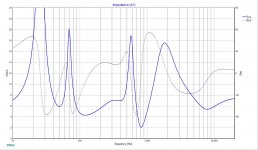
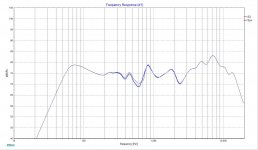
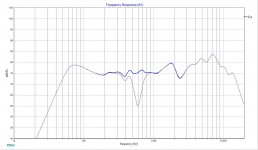
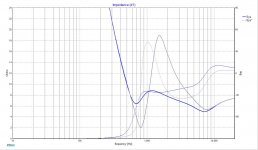
 Absolutely stunning little box and workmanship.
Absolutely stunning little box and workmanship.